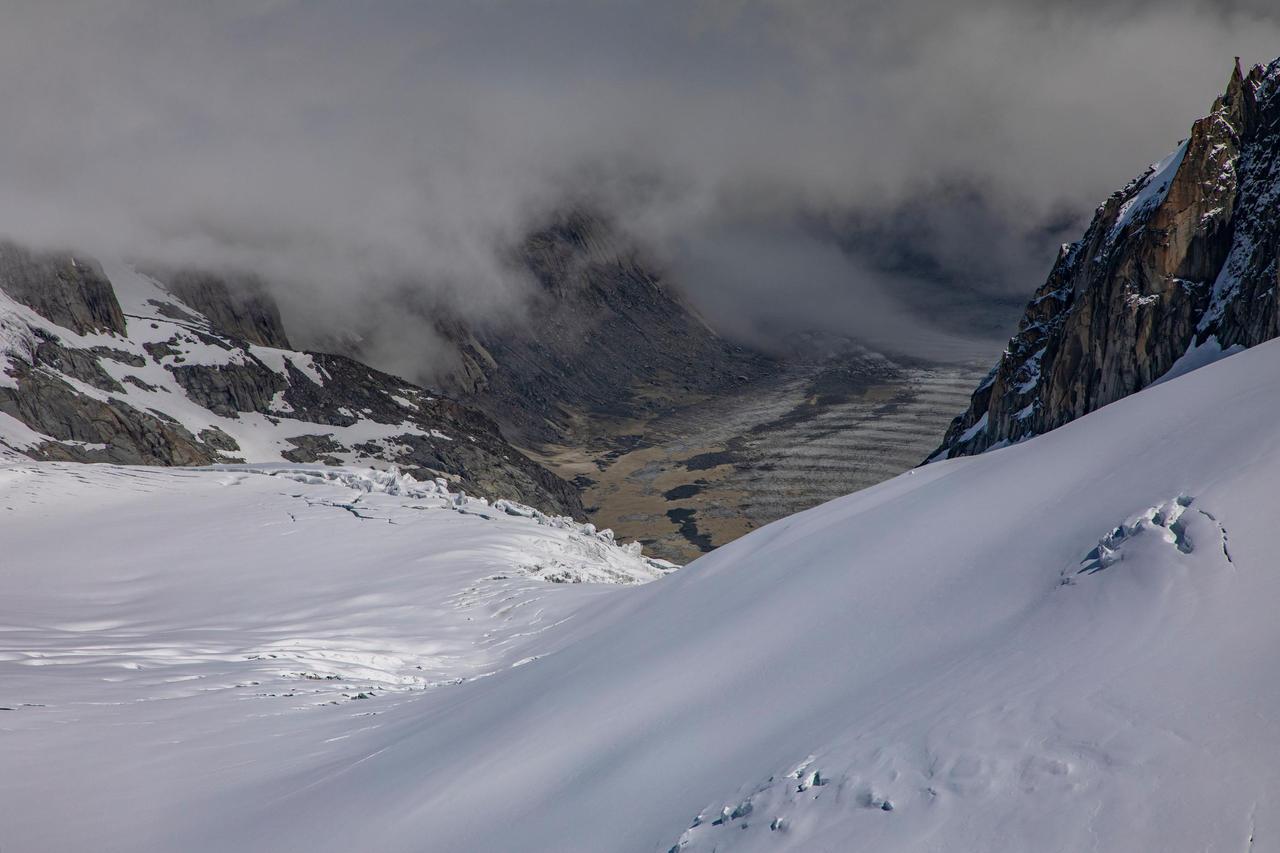This is a photograph taken on the tongue of the Mer de Glace, in Chamonix (Haute-Savoie).
We see the glaciologist Étienne Berthier carrying out GPS measurements to validate, from the ground, the satellite observations which confirm the accelerated melting of the most famous French glacier.
If the CNRS researcher is interested in it at this point, it is because "the glaciers of the Alps are among those which are thinning the fastest with those of Iceland and Alaska".
The scientist has also demonstrated this in the context of the study in which he participated in an international team bringing together specialists from the CNRS and the National Center for Space Studies.
Their mapping, published in the journal Nature, is based on half a million images taken since 2000 by the Terra satellite.
Already 2 km lost since 1850
When the Montenvers train arrives, you have to descend a long metal staircase to be able to set foot on a sea of ice that is getting stunted year after year.
The ice is retreating 8 to 10 meters per year, or about 2 km since 1850!
In total, the glacier has lost 120 m in thickness in a century.
The situation is even more alarming in the Pyrenees, where glaciologists fear that the glaciers will disappear from the massif by 2050. Between 1924 and 2019, the Ossoue glacier shortened by 590 m.
Its surface area fell from 90 to 32 hectares, a loss of 64%.
At the same time, its thickness was reduced by 80 m and its front fell by 125 m.
This is because global warming is eating away at the amount of snow and ice accumulated at altitude each year.
Over the past decades, glaciologists have observed a drop in the quantity of water stored in the form of snow in the middle of spring in all the French high mountain massifs.
Read also What if the glaciers disappeared?
This decrease is linked to atmospheric warming: it reduces the fraction of precipitation falling in the form of snow in favor of rain which reinforces the melting of the snowpack. Illustration at the Col de Porte, in the Chartreuse massif: at an altitude of 1325 meters, the snowpack has decreased on average by 38 cm from 1990 to 2020. Applied to glaciers, the expression “melt like snow in the sun” never made so much sense.

